Easy Way to Level a Rifle Scope
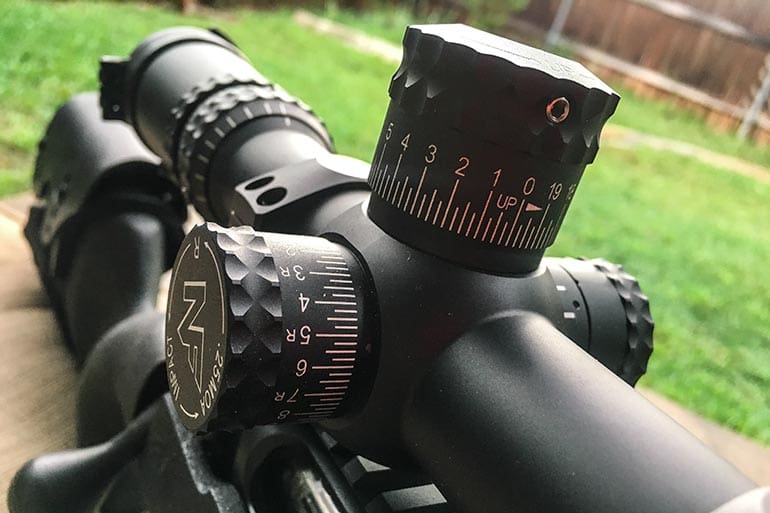
Mounting a new rifle scope correctly is pretty important. If done wrong, you will constantly struggle with finding a good position behind the scope and the adjustments you make when shooting won't make sense.
There are two keys to properly mounting a scope. First, make sure the scope is in line with the barrel. Second, make sure the scope is square to the world.
You get the scope in line with the barrel by first getting the gun level, then placing the scope directly on top. The scope is then leveled so that the vertical reticle line — and by extension the elevation adjustment — is in line with gravity. This is often done with bubble levels.

Level the gun by placing a bubble on a flat surface like the action rails or Picatinny/Weaver rails.
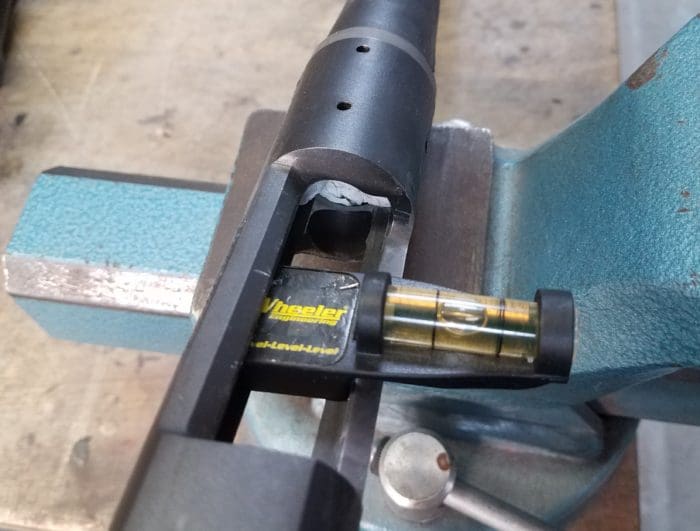
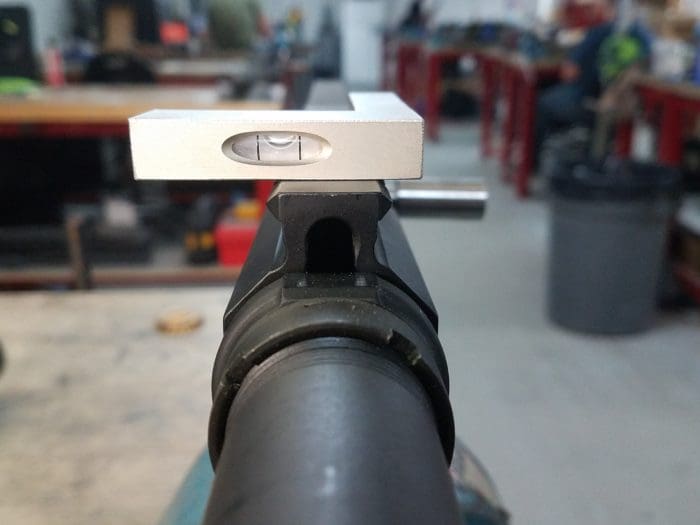
Once you know your rifle is level, you then level the scope by putting a bubble on top, specifically on the top of the elevation turret.
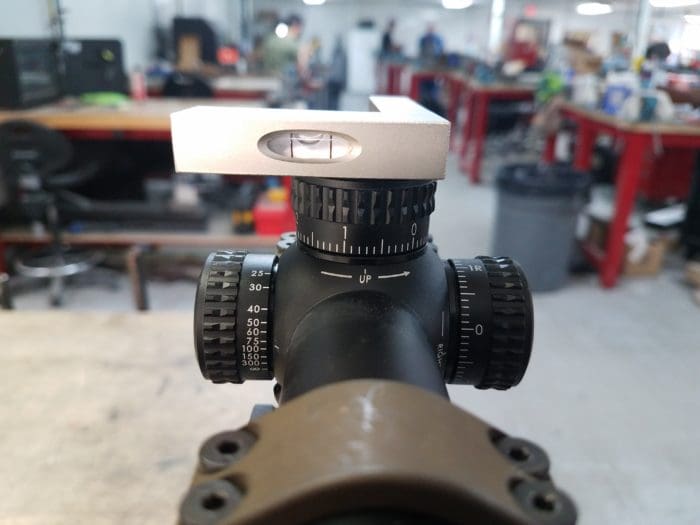
Once both bubbles read level you then torque the scope ring screws to spec without disturbing anything. The scope is now level to the gun which is level to the world. This will allow all drop compensation to work properly without adding mystery drift and unexplainable dope errors at distance.
Another good way to see if your reticle is properly level is to use a plumb line. It ultimately accomplishes the same thing as a bubble level, though it tends to be more accurate.
Ideally, I will do both. Hang a plumb line (something weighted at the end of a piece of string) in front of the rifle so it's visible, but has a similar thickness to your scope's reticle lines.
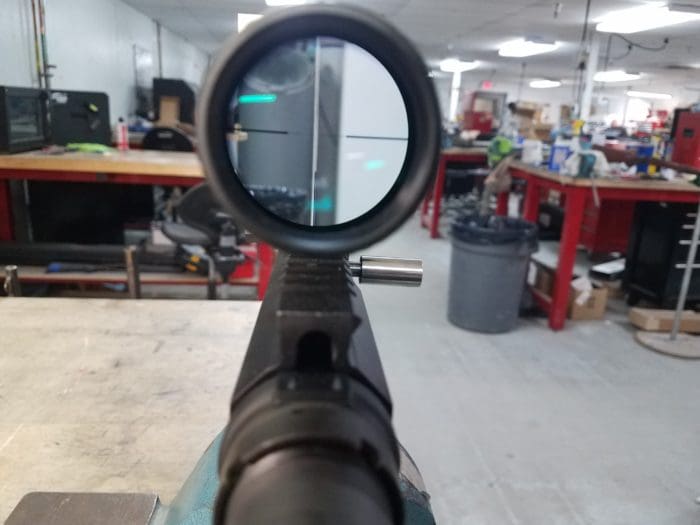
Level the gun with a bubble, level the scope with a bubble and fine-tune the scope with the plumb line. There should be one consistent line from the string through the reticle.
It's critical that the gun's bubble be level when doing this. If the scope's bubble is a little off, but the reticle matches the plumb line, I will defer to the plumb line. That's because the turrets aren't always perfectly square to the lead screw/reticle. Fine-tuning with a plumb line should eliminate small errors caused by this.
I hold to compensate for drop, so this is good enough for me. If you dial in for drop, you might want to run the elevation turret to the top of its movement and back down, ensuring that it stays in line with the plumb.
The reticle should be in line with the turret screw, so they should match, but scopes wear out, things break and manufacturers make mistakes. It doesn't hurt to double-check that everything is running the way it's supposed to.
The flat portion at the bottom of the turret housing is the best surface on a scope to use when squaring.

Unfortunately, it's at the bottom, so not a very convenient place for a bubble. If you have a bubble setup that will work, use it on that surface instead of the top of the turret. I know guys who have stacked feeler gauges between the scope base and the top rail of the rifle to make them as parallel as possible.
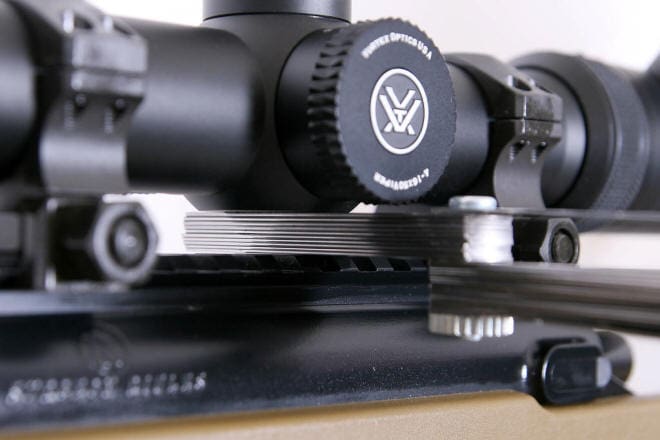
This isn't viable for all rifle and scope mount configurations, but I've heard it works quite well.
When tightening the scope ring halves together, you will have to do it in stages. In the beginning, the rings should be loose enough to allow the scope to move while being tight enough to stop it from flopping over due to the weight of the turrets.
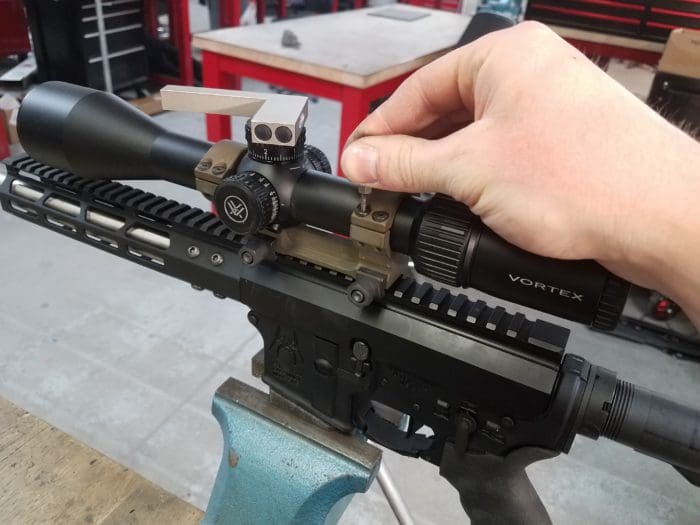
Once level, tighten it a little then re-confirm that everything is level. Sometimes the scope will move. You should have enough wiggle room for fine adjustments.
Carefully tighten to spec and re-confirm. You will want to tighten the screws down in a cross pattern and tighten both rings at the same time. Don't tighten one completely before you've even started tightening the other.

Make sure the top half of the ring is evenly mounted. The gaps on either side of the scope should be equal.
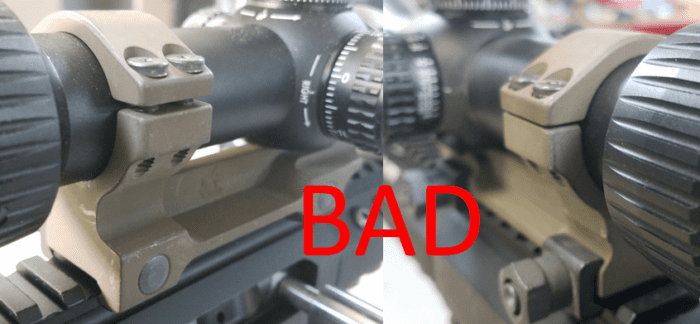

Torque values for scope ring screws and scope mount cross bolts will vary. Refer to your product's literature for its recommended inch-pound values. The Wheeler Engineering – Fat Wrench is inexpensive and handy for this job.
Never Loctite your ring screws. Torque them to spec and confirm torque before shooting.
Next is a little shooting voodoo; all the guys I've met who are obsessed with accuracy will torque their scope rings screws in the exact same pattern every time. That way the pressure is being applied exactly the same, minimizing any shifts that could be caused by new stress.
This is done when confirming that the screws are still torqued to spec before you go shoot. This is likely just superstition, but it also can't hurt. It's also not something I personally do.
Eye relief is the distance your eye should be from the scope to obtain the maximum field of view when looking at your target.
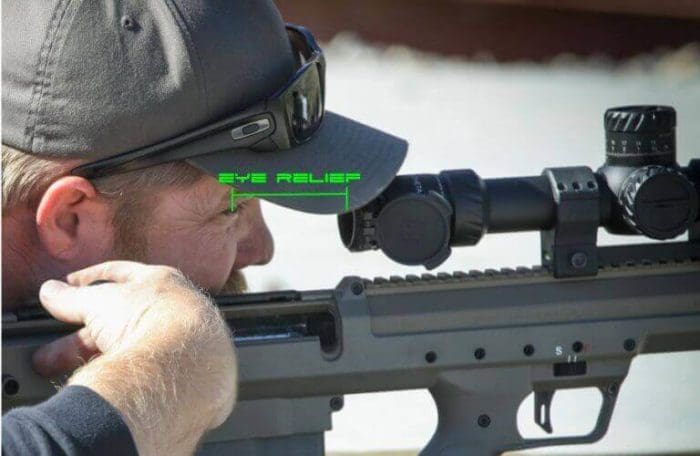
Too close or too far will result in scope shadow. Eye relief distance varies for different scopes and changes depending on how zoomed in it is. Set your eye relief to whatever position and power you will most likely be shooting in.
Keep in mind that your head's natural position on the stock changes depending on your shooting position. It won't be the same in the prone as it is when standing. If this is a short-range hunting rifle that will be shot from sticks on 4-6 power zoom, set up a similar shooting position to establish your eye relief.
The important part is that your head is in the same position on the stock when the eye relief is set. If you will be shooting the rifle from a bench with the zoom maxed out, set your eye relief for that. Get in position while sitting, zoom in all the way and move the scope forward or back until the eye relief is correct.
Depending on how your scope is mounted to the rifle, you may need to do this by sliding the scope itself forward and back inside the rings. Because of this I usually determine my eye relief before leveling the scope. If you have a ton of rail space like on a flat top AR-15, eye relief can be easily changed by moving the scope and rings forward or back.
A scope's "correct" position on the rifle is 100% shooter-dependent. If you don't have a specific position that you will be shooting in, set the eye relief in the prone position at max power. When shooting in alternate positions you will have some leeway and adjustment ability with your head position. When prone you can't as easily or comfortably adjust your head position forward and back. That's why setting the eye relief for this position is a good default.
If I have plenty of rail space to properly adjust my eye relief, I will also set the scope in the rings so that the turret housing is touching the back side of the front ring.

This may be more voodoo, but it was something my sniper section did. By butting the scope up to the front rings as pictured, you minimize the chance of the scope sliding in the rings under recoil.
The rearward recoil force of the gun when fired is sharp and strong. Throughout the entire firing cycle that's when the scope is most likely to move in the rings.
Setting the scope in the rings like that is only possible if eye relief is not set by moving the scope in the rings. Since plenty of scopes are set without this in mind, it might not be a thing, so take it as you will.
Following that same principle of recoil being the strongest force exerted on the scope, press the mount forward on the rails as you tighten it down.
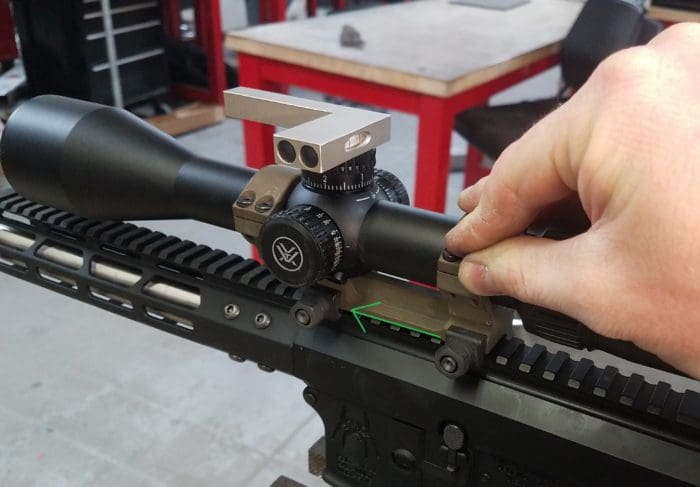
This too should eliminate any chance of the mount — and by extension the scope — moving under the force of recoil.
Lapping your rings increases the rings' holding force by increasing the surface contact between ring and scope. It also evens out the pressure, decreasing or eliminating stress points and ensures that both rings are properly aligned with each other.

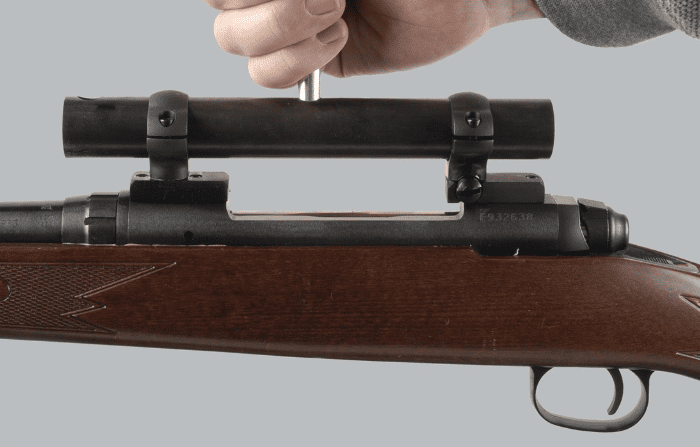
Leveling scopes can be aggravating since they don't always want to cooperate. It's frustrating getting everything level the way you want only to have it move when you start tightening the screws. But, doing it right and getting it as close to perfect as possible is well worth the time and effort.
Mounting the rifle in a gun vise, shooting sled or something similar that gives you the flexibility to make the gun level while keeping it fixed in place is a big help. That being said, I've leveled more scopes with the rifle sitting on its bipod than otherwise.
There are also jigs like Badger Ordinance – Dead Level Scope Leveling Device that allow you to level the scope in the rings independent of the rifle, though this only works if you have the rail space to fine-tune your eye relief. You could try marking where you want the scope set in the rings for proper eye relief and then level it in the jig, ensuring the mark stays in the proper spot…if you really want to use the jig.
There are plenty of ways to level a scope. As is the case with so many things in the shooting world, the result outweighs the method. As long as the scope winds up properly leveled to the gun (and the world) you've succeeded.
Source: https://www.thetruthaboutguns.com/how-to-properly-mount-a-rifle-scope/
0 Response to "Easy Way to Level a Rifle Scope"
Post a Comment